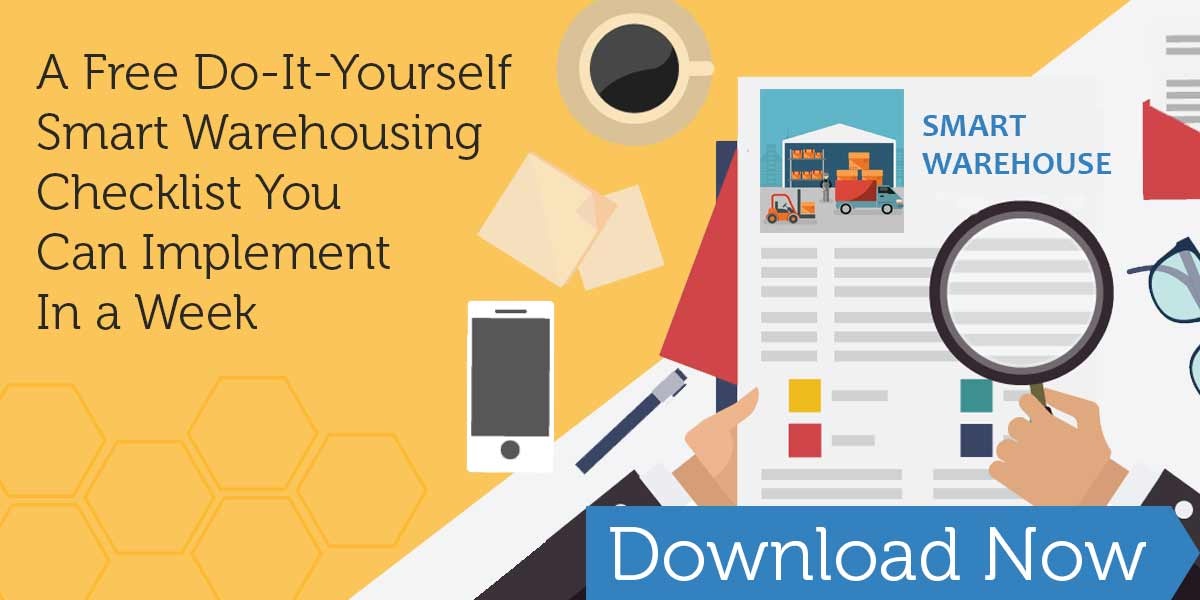While information management systems, warehouse management systems (WMS), and inventory management systems using barcodes or RFID have reached their prime, they’ve also reached their peak.
The growth in globalization, e-commerce, and a greater demand for throughput needs a better, more cost-effective solution to improve operational efficiency.
Bluetooth enabled inventory and asset tracking tags could be that solution.
At the very least, they’re a fiscally feasible foundation for smart warehousing.
Storage facilities need to achieve the most cost-effective and logistically efficient operation possible.
It involves a delicate balance of inventory management, safety stock, and routine processes within a warehouse that needs a constant flow of information in order to effectively manage its constant flow of goods.
The adoption of computerized systems and barcodes were game-changers in the way warehouses collected, analyzed, and utilized information within facilities and beyond.
Bluetooth tag systems, or Bluetooth Low Energy (BLE) Beacons to be more specific, work in much the same way as barcode systems, except they don’t actually need to read a sticker. A clear line-of-sight between a scanner and the tag isn’t necessary because the tag (and its associated inventory) information is read by a wireless reader. The BLE sensor network essentially extends a wireless local data network into a warehouse, from where data is collected.
The information that is transmitted via Bluetooth radio signals can travel through most materials, so it’s possible to place these tags within packaged or palletized goods as well, a boon for operations where rough handling is a norm.
Beacon tracking systems are fairly simple, there are just three primary components:
- A compact Bluetooth beacon — also referred to as BLE beacons or tags.
- A mobile scanner to read beacon signals — this could be a sensor or even a smartphone.
- An access point to a network, which is connected to a database or cloud-based server — this could be a smartphone as well.
With access points or mobile scanners in place, warehouse personnel don’t need to scan labels or log in to remote terminals or workstations to access or manage inventory information, they can use the system on the move.
Unlike RFID tagging systems that accomplish the same feat however, there’s no need for expensive, proprietary handheld readers — any Bluetooth enabled smartphone will do.
BLE Beacon technology is more evolved, and yet, it costs less than RFID.
Click here to know why.
The tags themselves are low cost as well, and batteries in the Bluetooth beacons can last for years before they run out, which means you can recover their cost several times over.
The use of such wireless real-time location systems (RTLS) to track and manage inventory and assets within warehouses and yards will eventually replace legacy systems that rely on manual tagging, data entry, and cyclic inventory.
The advantages of wireless BLE tracking systems far outweigh the initial costs, and the use of low-cost Bluetooth beacons guarantee that such systems will pay for themselves in short order through an increase in productivity, decrease in human error, better inventory accuracy, and better end-to-end visibility.
Need help to evaluate a BLE based live tracking solution? Try our simple guide.
Properly implemented, these systems can create a smart warehouse without the unnecessary frills and expenditure that’s usually associated with such ‘futuristic’ setups.
As companies adopt and become more adept at using this technology, here is a laundry list of what you can gain using Bluetooth enabled goods and asset tracking.
1 — Create the Optimal Warehouse Layout Using Past Data Patterns
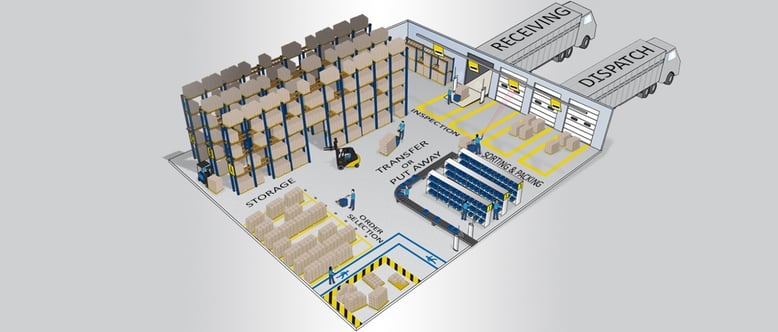
Storage facilities may consist of (and serve) a number of separate zones, and almost every warehouse space management system runs into trouble when optimizing inventory placement.
It’s important to position and maintain stock at strategic locations where storage and picking are both effective and efficient. Your warehouse layout can be made more efficient by minimizing the time, space, and materials needed to complete an operation. By tracking inventory inside the warehouse or yard, knowing when they were checked-in or checked-out, which zone they are in right now, and the trail they took from entry to exit, it’s possible, for instance, to identify bottlenecks and reduce the travel time and distance between storage and dispatch.
You can also dig into order picking cycles to identify fast-moving goods and store them according to their order of importance; it’ll make storage/racking systems better aligned with the expected product flow and make pick paths shorter.
2 — Define Zones For Storage & Enforce Stocking Rules
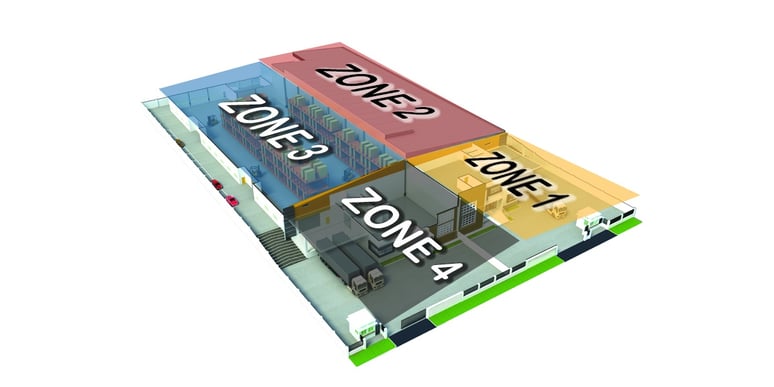
Needless to say, you can use the same Bluetooth beacon inventory tracking system to monitor goods through your warehouse inventory management system as they come in and move around a facility, which allows you to make sure they’re stowed where they should be to enforce an optimal warehouse layout.
Information about tagged incoming inventory can be recorded automatically, reducing the need for manual entries or cumbersome forms. Once it’s in the system, the system itself can keep a check on where and how inventory is routed and stored.
This sort of monitoring and accountability is crucial to facilities that need to set themselves apart as a hub that handles varied stock.
If you’re running a facility that’s a way-point between other storage facilities, leasing out space to other parties, or handling several types of inventory — commodities, raw materials, semi-finished or finished goods for instance — you need to be able to optimize, compartmentalize, and enforce the right inventory location.
No matter what constitutes the “right” location for you, whether it’s deep recesses for long-term storage, priority placement for perishable time-sensitive FIFO inventory, or short-term storage for cross-docking, make sure your operations follow the simple mantra — A place for everything, and everything in its place.
3 — Audit Inventory or Identify Free Space, Instantly
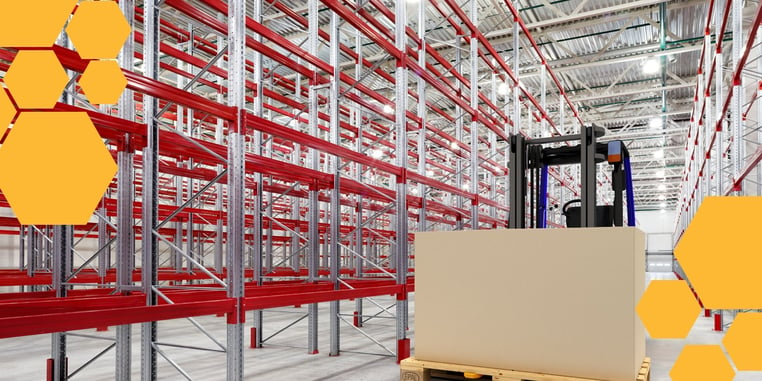
Inventory counts are a tedious part of the warehouse management process, and all functions that affect inventory levels need to stop until stocks are counted and the numbers reconciled.
With a Bluetooth tag enabled inventory tracking system, you wouldn’t need to do that.
Because tag movements are recorded in real time, Bluetooth beacon based warehouse tracking systems can provide accurate, real-time inventory information. Accurate data can be downloaded instantly, and you can streamline cycle counting without affecting the regular workday. That not only eliminates downtime, but also the costly overtime you’d probably have to pay personnel for a weekend of physical inventory counting and number crunching.
The speed and accuracy of inventory count should also give you the confidence to lower your safety stock levels. After all, the only reason to maintain buffer stock for regular operations (other than coping with fluctuations in demand) is to offset inaccuracies in counting.
An accurate inventory count can also give you a good idea of available storage space.
Warehouse space calculation isn’t always accurate, the potential storage space in a warehouse is often underestimated. Personnel often take the path of least resistance and stock goods closest to the loading/unloading point, while leaving large pockets of unutilized space in the deepest recesses of your warehouse, zones that are hard to find because, quite simply, you or your warehouse space management software just don’t know it’s there.
Knowing where stock is parked versus existing capacity is the easiest way to find slots or underutilized storage space in a large warehouse, and thanks to up-to-date inventory counts, you’ll know exactly where those free slots are.
4 — Utilize Warehouse Equipment & Assets Better
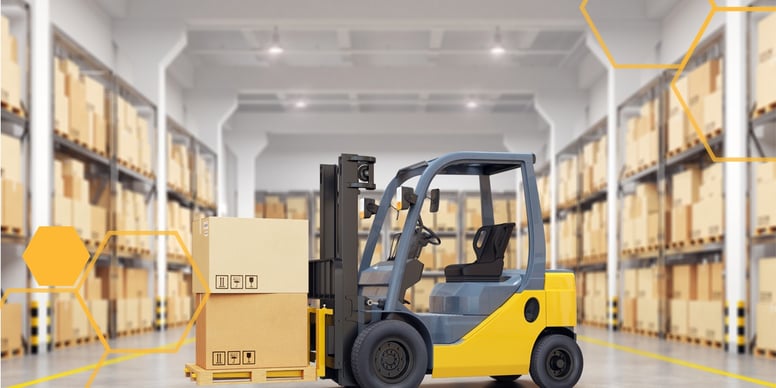
When maximizing your warehouse output, don’t miss out on the opportunity to make the most of your warehouse equipment and assets.
You can use the same Bluetooth tag tracking system to track objects other than inventory. It’s just as easy to track assets that are integral to operations in the warehouse, items like packaging, pallets and bins, scales, forklifts, or even personnel as they move about in the warehouse.
Pattern analysis will help identify idle assets, reduce idle time, and make sure they’re always within easy reach of where they’re needed so your people can pick faster, build pallets quicker, and get orders out the door ASAP to make more accurate on-time shipments.
5 — Prevent Inventory From Aging (Ageing) Through Automated Alerts
![]()
Many inventory management systems still depend on a fair bit of manual effort to tag, track, and trace inventory in a warehouse. Despite their best efforts however, they sometimes miss something, which usually leads to a surplus of obsolete goods. Unless you’re running a LIFO model intentionally, you don’t want inventory to stay put till it’s forgotten.
Inventory ages due to one or more of the following reasons:
- It’s placed in a zone where it doesn’t belong.
- It’s been misplaced and is hard to locate.
- It’s buffer stock that’s never been needed or put into circulation.
- You’re dealing with homogenous items like coal, agricultural produce, or materials where differentiating one batch from another, especially by eye, is difficult.
Whatever the case, aging inventory not only impacts product quality, but it also puts inventory at risk of spoilage, theft, or damage. Besides the obvious overheads of storage, locked working capital, and the eventual cost of disposal and replacement, it also leads to higher insurance premiums, besides disrupting balance sheets due to changes in the original cost and sale price of old inventory over a period of time.
Of course, that’s all a thing of the past thanks to Bluetooth beacon enabled inventory monitoring systems.
Once tagged, batch or inventory information can be logged and tracked using your usual warehouse or inventory management system. Weeding out obsolete inventory is as simple as setting up alerts for aging, and detailed reports about anything that’s approaching expiration or is already past its prime can be generated instantly.
The same system that flags aging inventory can also help you locate it quickly and get it into circulation (when feasible) to make the most of what’s in store.
6 — Streamline Operations Using Big Data

Space optimization in warehouse is tedious, especially when it comes to optimizing inventory placement and throughput. More often than not, those inefficiencies can be traced back to one or more of the following reasons:
- An inability to analyze the speed with which inventory moves through the system, both at peak periods as well as during periods of normal operations.
- An inability to identify bottlenecks — both predictively and after the fact — in existing operations.
- Sometimes, it’s as simple as insufficient space in the warehouse.
Perhaps the biggest source of inefficiency is the simple fact that inventory is stored according to convenience or some archaic sorting system, instead of a fashion that’s designed to minimize the time taken for order picking and transit within the facility.
It’s especially prevalent in warehouses where the order picking system of choice is “single order picking” or “batch picking”, where pickers fulfill one order at a time, regardless of the physical location of inventory in the warehouse, which adds up to a lot of unnecessary walking and searching.
With a wireless inventory sorting and tracking system using Bluetooth beacons, it’s easier to manage inventory through streamlined receiving, storage, picking, packaging, and cycle counting processes, which improves your facility’s ability to handle more orders during peak periods.
Over time, the data you gather on inventory movement can help identify scope for improvement, giving you continuous input on operational areas like dwell time, space availability, transit time between zones, and others where there’s scope for improvement.
Live Inventory Tracking for Smart Warehousing
Tomorrow’s warehouses are banking on live tracking technologies like Bluetooth tracking beacons to streamline and improve coordination among the many moving parts in a warehouse through real-time data insights.
Smart warehouse management operations that use shareable and actionable information are in a better position to streamline their inventory, space management, and shipping processes. Two key areas where detailed point-to-point tracking can help include:
- Inbound Inventory Processing — with live status updates for incoming inventory, schedules that can be automatically updated to reflect current and expected changes in warehouse resource requirements (storage space, personnel, and equipment) as well as improve fast moving processes like cross-docking.
- Warehouse and Inventory Management — with accurate information on inventory, warehouse space utilization, inventory cycle counts, and inputs that could automate space allocation using a suitable WMS for warehouse space optimization. Data that’s continually available through handheld devices — especially to personnel on the floor — also reduce wasteful trips to a stationary terminal or an office to look up inventory count or location.
Substituting older, slower, error-prone manual human activities and siloed information systems with live tracking technologies like Bluetooth beacons is vital to implement the six principles we just covered, because without visibility, process enforcement and accountability is much harder to manage.
It’s easier to organize, improve, and automate operations in a warehouse if you’ve got better situational awareness of how things are actually running.
Live tracking won’t just give you better insight into your operations and the problems that are affecting warehouse space management and throughput, it’s also a crucial first step toward building a smarter warehouse.
---
Thinking about setting up a Smart Warehouse?
Start by live tracking in your facility to gain insight into your business, understand where the roadblocks are, and where there’s scope to improve efficiency in receiving, space allocation, storage, picking, shipping and end-to-end inventory management. Try our free do-it-yourself checklist and figure out where you can start with smart warehousing today!


